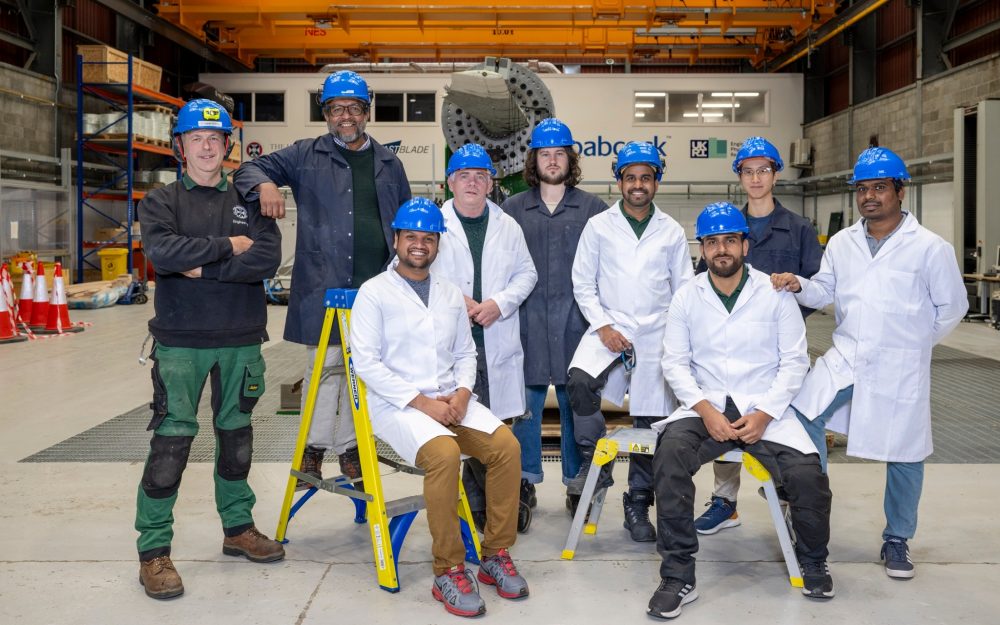 A ‘state-of-the-art’ design of tidal turbine blade has been manufactured in Scotland for the first time and more cheaply than before. It could, say its makers, reduce the levelised cost of tidal energy.
A ‘state-of-the-art’ design of tidal turbine blade has been manufactured in Scotland for the first time and more cheaply than before. It could, say its makers, reduce the levelised cost of tidal energy.
The design engineers, from the University of Edinburgh, say the new structure reduces the amount of materials necessary – bringing down the weight, volume and, crucially, the cost of manufacturing the blade.
The team is based at FastBlade, the world’s first rapid testing facility for tidal turbine blades, at Rosyth in Fife, Scotland. Fastblade is part of the Arrol Gibb Innovation Campus in Fife, for large-scale advanced engineering and manufacturing and skills development focused on the marine and energy sectors.
FastBlade leader Dr Eddie McCarthy, of the University of Edinburgh’s School of Engineering, said: “This project represents a major step change in our group’s capacity to manufacture tidal blades at reasonable size scale (around three metres long) at a reasonable speed – we began the project in October 2022.
We have found a faster, cheaper route to manufacture than the usual tidal blade fabrication process, based on an altered design – we hope the combination of improved design and optimised manufacturing process will contribute to reducing the levelised cost of energy (LCOE) of tidal stream energy, with the long term goal of matching LCOE of offshore wind.”
Currently the UK contract price for tidal stream energy is around £178 per MWh, compared to £65 for offshore wind, and the high generation cost is a barrier to the development of tidal energy – potentially the missing piece of a year-round, renewable energy grid.
Lead design engineer professor Dilum Fernando said: “This is the first time this type of structure has been used in blade manufacturing. Its monolithic structure eliminates the weaker adhesive joints found in conventional rotor blades, which will make it more resilient to tidal stream conditions.”
The blade was manufactured with Tocardo Turbines for tidal energy technology company QED Naval as part of the European Tidal Stream Industry Energiser Project known as TIGER, in a service agreement brokered by Edinburgh Innovations, the University of Edinburgh’s commercialisation service.
Jeremy Smith, managing director of QED Naval, said: “We have deliberately demonstrated the design tools, processes and build method on our smaller T1 blade design, using a 6.3m rotor diameter, but we will be pulling these through into our T3 blades up to 14m rotor diameter. This work, and its part in the EU Interreg TIGER Project helps showcase cost savings and the benefits of tidal energy.”
The four blades completed to date have been deployed in QED’s Subhub tidal platform, currently undergoing sea trials in Langstone Harbour near Portsmouth on the south coast of England, and the University of Edinburgh team is looking for funding to carry out detailed testing of a fifth blade at FastBlade.
Ian Hatch, head of Business Development for the College of Science and Engineering at Edinburgh Innovations, commented: “A recent report found that tidal stream energy could provide more than 6GW of energy to the UK grid by 2050, providing a significant baseline power source for our future electricity grid.
Image: The FastBlade team at the University of Edinburgh's Rosyth facility (courtesy of Neil Hanna)






